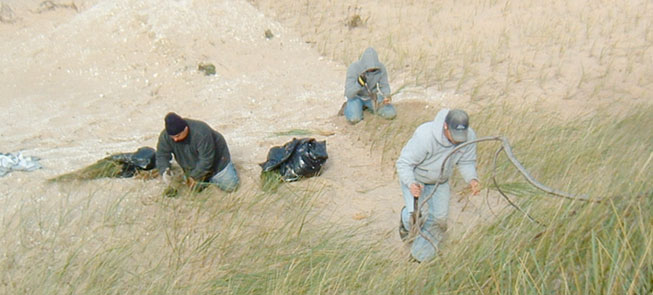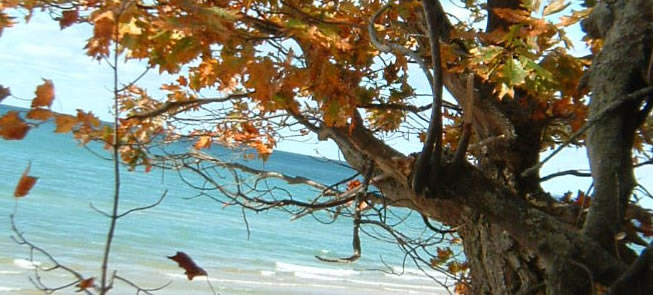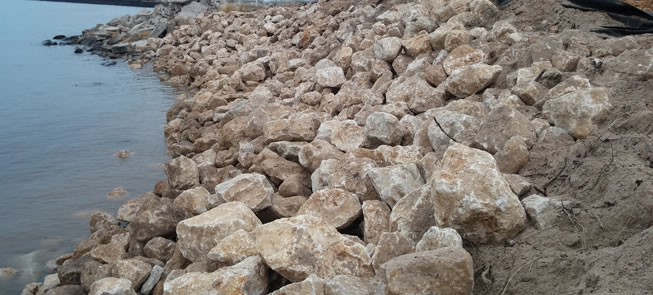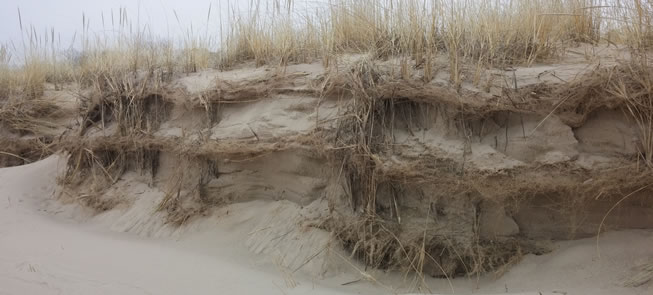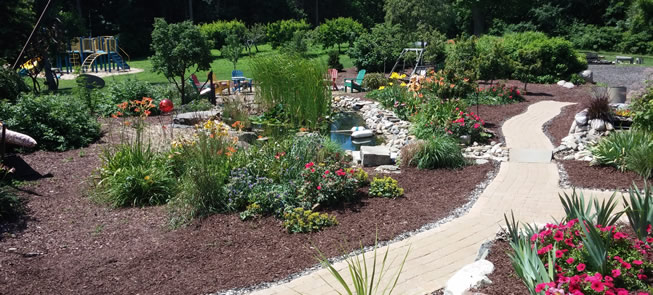Blue sparkles in the sun are what the clustering Karner Blue butterflies (Lycaeides melissa samuelis) appear to be from a distance. They are the extremely rare and endangered inhabitant of the meadows that I help to preserve. In the last fifteen years the population has fallen to 1% of what it once was. In the beautiful Karner Blue God has created an insect that is uniquely suited to its environment. Sadly, that uniqueness may prove its demise.
You see, the Karner Blue is completely dependent on one flower, the wild blue lupine. This beautiful perennial flower, almost iridescent blue in color, lives in a specific habitat– dry shady soils in full sun to light shade. These plant are also in decline because of two primary reasons. First, their habitat has been destroyed by urban sprawl. Second, they have been choked out by forest growth resulting from fire suppression.
The eggs from the year before hatch in mid April when the lupine begin to sprout. The larvae(caterpillars) feed on the new leaves turning them into a lacy appearance. Amazingly, these larvae have a mutually beneficial relationship with mound building ants that live in the same habitat. The ants protect the larvae from predators and parasites. In return, the larvae excrete a sugary substance that is consumed by the ants. After the larvae form a chrysalis they emerge as adult butterflies in late May. The males have beautiful violet blue wings fringed with white. the underside of the wings are silver with black spots and orange markings. The females are similar in color except they are a more soft brownish blue. One more bit of information, their wingspan is only about one inch.
The adult butterflies lay eggs on the maturing lupine plants which hatch into a second generation in mid July to early August. This second hatch lays eggs near the roots of the plant to emerge again the next Spring. Although the adults can feed on other kinds of wildflowers the larvae, or caterpillars, can feed only on the leaves of the wild lupine.
Michigan’s west coast is one of the areas that contain a pocket of Karner Blue butterflies. Their are small pockets of surviving populations from Minnesota to New Hampshire. Many different ecology groups are trying to help bring back the Karner Blue population through the improvement of their habitat. I have been involved in establishing and maintaining blue lupine plants for a Michigan electric power company where the butterflies are found in the open areas under power lines near the Croton and Hardy dams. I have only seen a few of these magnificent miniature butterflies. They appeared as flitting blue sparkles in the sun.
This beautiful butterfly is a wonderful example of the handiwork of God creating a dependent relationship between the butterfly and the flower. Without the flower there would be no butterfly. It reminds me of the relationship God has created between the child of God and the church. The child of God must be joined to a church that is faithful to the Word of God. There he is fed by the preaching, guided by the elders, and nurtured by fellow saints. This implies that he participates in and fellowships with his fellow saints in worship and congregational life. Like the Karner Blue without the lupine will die so also the Christian without the church will die. He may be fed in other places, but, his children will die in their generations.
Lord, make us faithful.
His Face I See
His face I see in the clouds of the sky.
His caress in the gentle breeze.
His power in the shaking earth.
His voice in the booming surf.
His beauty is in the flowers of the field.
His footsteps I hear in the hurricane.
His wrath in the raging fire.
His majesty in the ice covered mountains.
His patience a spring that never runs dry.
His infinity like the height of the heavens.
His understanding deep as the sea.
His gentleness as the newborn calf and cow.
His sovereignty like a storm untamed.
His kindness like feeding orphan lambs.
His faithfulness like the sunrise each morning.
His sweetness in the honeycomb.
His face I see in the creatures of His hand.
Reflecting the face of His Son, my Lord.
Deane Wassink, July, 2006.

